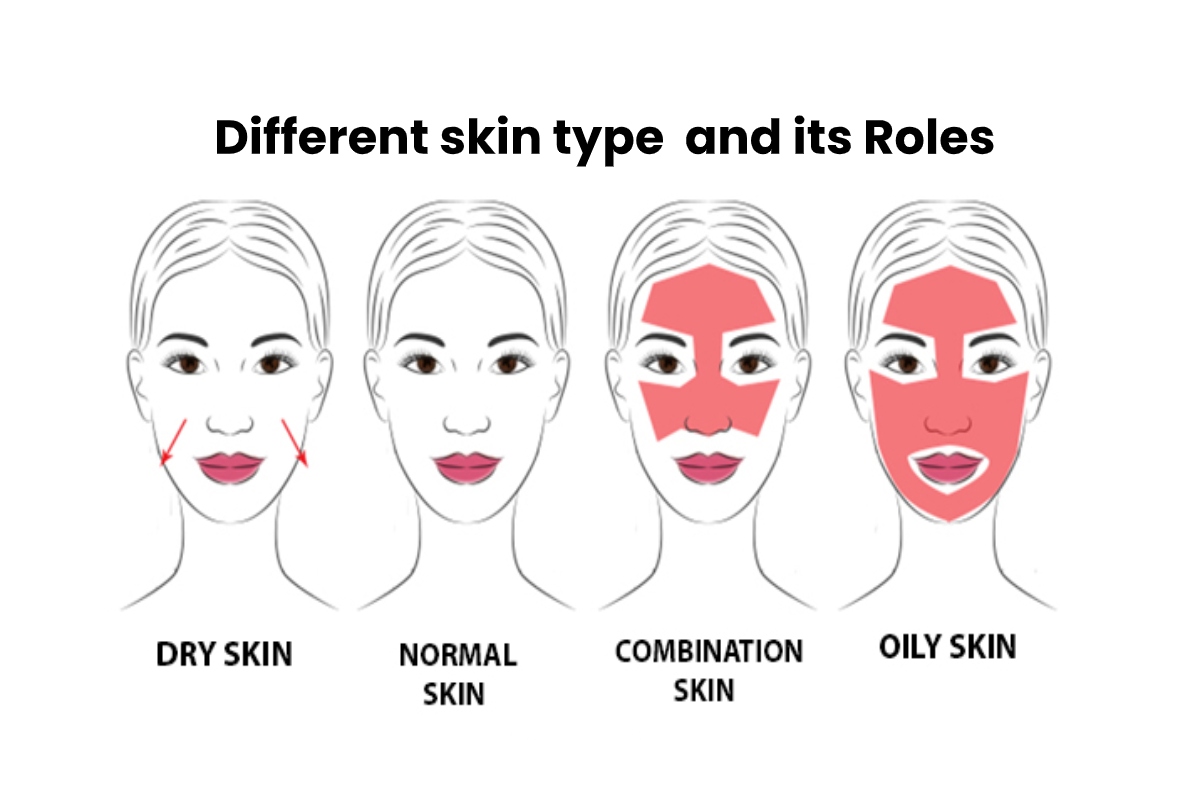Table of Contents
1. How do I know What my Skin Type is ?
Knowing the characteristics of your skin type allows you to provide appropriate care. In terms of the face
- Your face is continuously shiny, you probably have oily skin this is one skin type.
- If your skin is thin, sensitive, and a source of tightness after washing, you certainly have dry skin.
- The skin is uniform, soft, smooth, and has few imperfections, it is of a so-called normal type another skin type.
- It is dry on the cheeks and temples, but somewhat oily at the mid-line (forehead, nose, chin), you probably have combination skin.
If you have any doubts about the nature of your skin, you can take the tissue paper test. It is the practice as follows:
- Clean and wipe your face.
- Wait half an hour for the sebaceous glands to resume their activity.
- Apply two large strips of tissue paper vertically to the face:
- one on the part of the midline of the face (nose, forehead, chin)
- the other on one side, against the cheek and temple.
Press without rubbing for one or two minutes.
The condition of the paper will tell you about the nature of your skin:
- Both papers have significant traces: your skin is undoubtedly oily.
- The paper affixed on the middle line has greasy marks, but the other does not, your skin is the combination.
- The two papers have few fatty traces: your skin is healthy.
- if none has an oily mark: your skin is undoubtedly dry.
This test just allows you to get a better idea of your skin types in the absence of injury or disease. Only a dermatologist can make a real diagnosis.
2. Oily Skin Type
Oily skin relates to an excess of sebum, which gives it a shiny appearance. The skin appears thick, and the skin texture is often irregular, the pores dilated.
Oily skin is a breeding ground for the development of blackheads,pimples, or even spots. Oily skins are generally less fragile than dry skin: the sebum, which participates in the formation of the hydrolipidic film, better preserves them from drying out. And also it is better hydrated, more flexible, and therefore less marked by the signs of aging. This type of skin frequently found in adolescents and young adults.
3. Dry Skin Type
Dry skin indicates a lack of sebum. Poor in lipids, the hydrolipidic film present on the surface of the skin becomes too permeable: poorly protected, the skin dehydrates quickly.
Dry skin appears beautiful, its grain tight. And is sensitive, easily irritated, and can present imperfections (redness, sores).
It is often subject to feelings of tightness or itching. This type of skin frequently encounters in the elderly, the secretion of sebum decreasing with age.
4. What is Healthy Skin?
Normal skin is relatively balanced skin: seborrhea activity is neither too weak nor excessive.
The skin texture is regular, the complexion relatively uniform.
5. What is a Combination Skin?
We speak of combination skin when an oily area (the T area: nose, forehead, chin) and a dry area (cheeks, temples) coexist on the same face.

